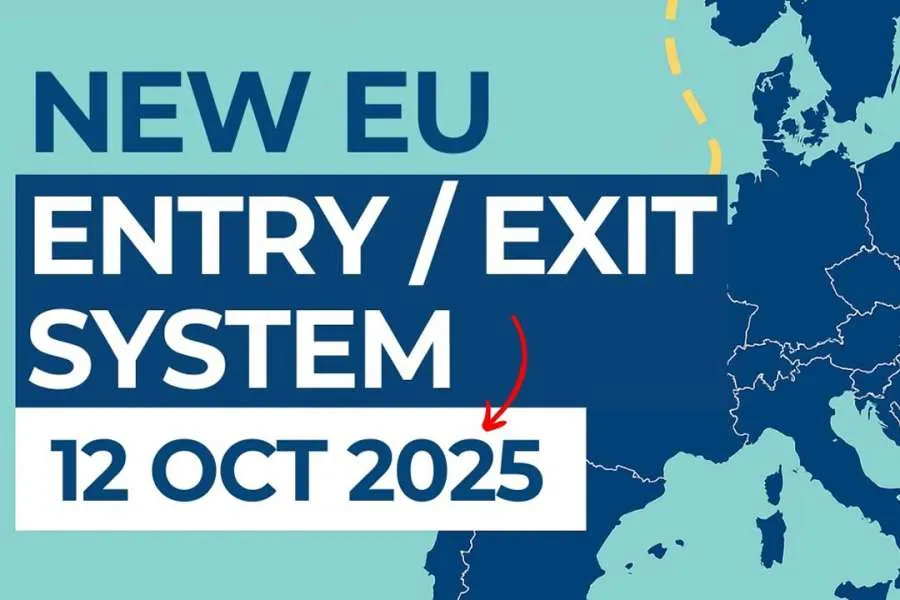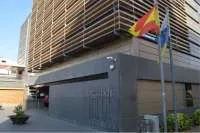VIDEO: New EU Entry/Exit System to Launch on 12 October 2025
- 05-10-2025
- National
- Canarian Weekly
- Photo Credit: Uk Gov
- Video Credit: Uk Gov
From 12 October 2025, the way non-EU travellers cross Europe’s external borders will change dramatically. The European Union will introduce the Entry/Exit System (EES), a fully digital border control mechanism that replaces passport stamping with biometric registration.
The EES will affect millions of travellers each year, including many Britons visiting Spain and the Canary Islands. Here’s what it means for you.
What Is the Entry/Exit System (EES)?
The EES is a new automated system that will record information on non-EU nationals, i.e. third country nationals, entering and leaving the Schengen Area for short stays, up to 90 days in any 180-day period.
Instead of having your passport stamped, your data will be logged electronically, including:
- Basic passport information
- Facial image (photo)
- Four fingerprints
- Date, time, and place of entry or exit
Additional information you will be asked to provide:
- Do you have proof of accommodation for your visit?
- Have you got a return flight?
- Do you have sufficient funds for your stay?
- Do you have travel insurance?
The system aims to make border checks faster, improve security, and automatically flag anyone who overstays the 90-day limit.
According to the European Commission, the EES is designed to modernise and strengthen border management while streamlining travel for legitimate visitors.
Who Will It Affect?
The EES applies to all non-EU citizens travelling to Schengen countries for short stays, whether you need a visa or not.
This means it will apply to UK nationals, as well as travellers from the US, Canada, Australia, and many others who currently enjoy visa-free entry.
Who Is Exempt
The EES will not apply to:
- EU, EEA, and Swiss citizens
- People holding EU residence permits or long-stay visas
- Children under 12 (who will not need to give fingerprints)
How Will It Work in Practice
When you arrive at a Schengen border (such as an airport or ferry port), you’ll go through a new EES checkpoint:
1. Your passport will be scanned.
2. A camera will take your photo.
3. You’ll place your fingers on a scanner to record your fingerprints.
4. The system will log your entry or exit details in a secure European database.
This process replaces the manual stamping of passports. Once you’re registered, subsequent crossings will usually be faster.
The system is managed by eu-LISA, the EU agency responsible for large-scale IT systems for security and justice.
Gradual Rollout
Although the official start date is 12th October 2025, the EU will introduce the system gradually over the next six months, before being relied on fully from 10th April 2026.
Some airports and border points may continue stamping passports temporarily while the EES equipment is fully installed and tested.
This phased approach is designed to avoid major travel disruption, particularly at busy hubs such as Madrid, Paris, and Frankfurt, and at UK EU crossings like Dover and the Eurotunnel.
Travelling to the Canary Islands
For travellers coming to the Canary Islands from outside the EU, the EES will apply at the first point of entry into the Schengen Zone, and all airports in the archipelago say they are ready for its implementation.
Here’s what to keep in mind:
- If you’re visiting the Canaries from the UK or another non-EU country, you’ll go through EES checks when entering and leaving the Schengen Area.
- Allow extra time at the airport, especially during the first few months of implementation.
- Residents of Spain or the EU will not be affected.
- The system will make overstaying more difficult, so travellers should keep track of their days in the Schengen Zone carefully.
Potential Challenges
While the EES brings welcome digitalisation, it’s not without concerns:
- Delays at borders may occur during the first few months.
- Technical issues with new biometric equipment could slow the process.
- Privacy concerns have been raised, though EU officials insist that strict data protection rules (GDPR) will apply.
- Uneven rollout may lead to confusion if some airports still use manual stamps.
However, EU authorities have built strong data safeguards and say travellers will have full rights to access or correct their personal information.
Looking Ahead
The launch of the Entry/Exit System marks one of the biggest changes in European border control in decades. For millions of tourists visiting Spain and the Canary Islands, it will mean a more secure, though slightly more high-tech, travel experience.
In the long term, the EES will also pave the way for ETIAS, the EU’s new electronic travel authorisation system expected to follow in 2026.
For now, the best advice for travellers is to plan ahead, arrive early at airports, and stay informed about how the new procedures work.
Other articles that may interest you...
Trending
Most Read Articles
Featured Videos
A Vision of Elvis Tenerife Promo
- 10-05-2025
TEAs 2025 Highlights
- 17-11-2025





























































